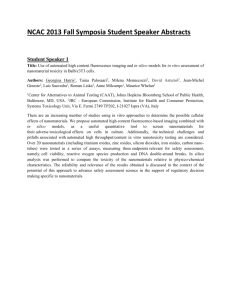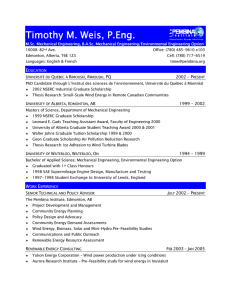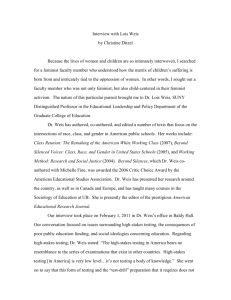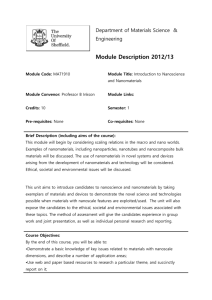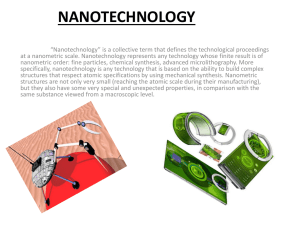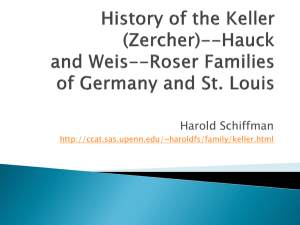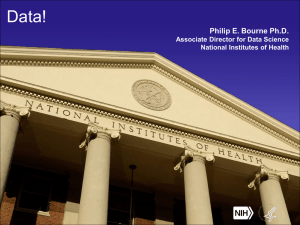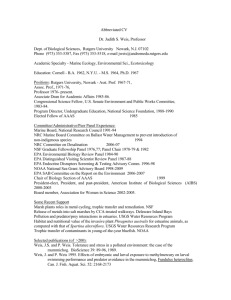Meeting Agenda
advertisement
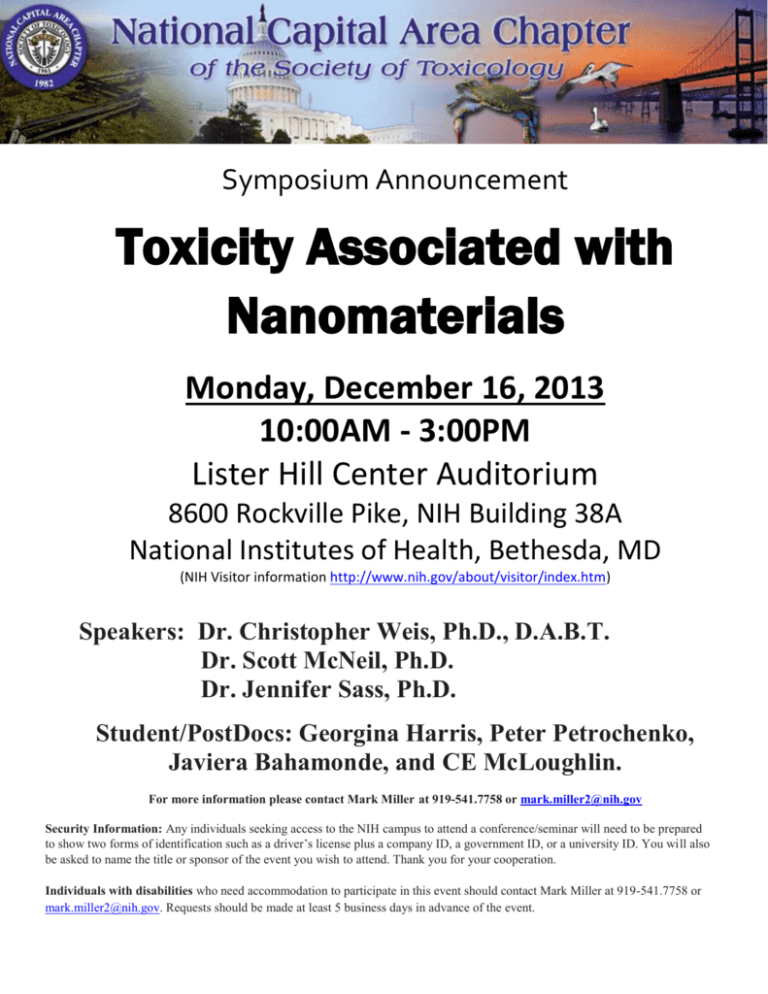
Symposium Announcement Toxicity Associated with Nanomaterials Monday, December 16, 2013 10:00AM - 3:00PM Lister Hill Center Auditorium 8600 Rockville Pike, NIH Building 38A National Institutes of Health, Bethesda, MD (NIH Visitor information http://www.nih.gov/about/visitor/index.htm) Speakers: Dr. Christopher Weis, Ph.D., D.A.B.T. Dr. Scott McNeil, Ph.D. Dr. Jennifer Sass, Ph.D. Student/PostDocs: Georgina Harris, Peter Petrochenko, Javiera Bahamonde, and CE McLoughlin. For more information please contact Mark Miller at 919-541.7758 or mark.miller2@nih.gov Security Information: Any individuals seeking access to the NIH campus to attend a conference/seminar will need to be prepared to show two forms of identification such as a driver’s license plus a company ID, a government ID, or a university ID. You will also be asked to name the title or sponsor of the event you wish to attend. Thank you for your cooperation. Individuals with disabilities who need accommodation to participate in this event should contact Mark Miller at 919-541.7758 or mark.miller2@nih.gov. Requests should be made at least 5 business days in advance of the event. Agenda: 09:45 - 10:00 10:00 - 10:15 10:15 - 11:00 11:00 - 11:20 11:20 - 11:40 11:40 - 12:30 12:30 - 13:15 13:15 - 13:35 13:35 - 13:55 14:00 - 14:45 14:45 - 15:00 Poster set-up Welcome/Introduction (Fowler/Miller) Plenary speaker 1 (Weis) Student Presentation 1 Student Presentation 2 Lunch/ Poster Session Plenary speaker 2 (McNeil) Student Presentation 3 Student Presentation 4 Plenary speaker 3 (Sass) Discussion/Closing Remarks (Fowler) Plenary Speakers Christopher Weis, Ph.D., D.A.B.T. Chris Weis, Ph.D., joined NIEHS in August 2010. He brings decades of practical experience working in the fields of rapid exposure and risk evaluation for environmental emergencies and environmental forensics. Weis’ office is located on the NIH campus in Bethesda, Md. As the NIEHS toxicology liaison, Weis serves as a senior advisor to NIEHS/NTP Director Linda Birnbaum, Ph.D., and also represents the Institute and the NTP on national and international committees, subcommittees, task forces, and ad hoc working groups. This allows Weis the opportunity to not only communicate the goals and priorities of the director to key officials at other Federal research, regulatory, and health agencies, but also to hear from them and others to help guide the development of the Institute’s programs and functions. Weis also serves as a liaison to external constituencies, stakeholders, and advocacy groups, as well as members of the NTP community. As part of his responsibilities, Weis was recently named to represent NIEHS as a co-chair on the Toxics and Risks Subcommittee of the White House National Science and Technology Council Committee on Environment, Natural Resources, and Sustainability. Prior to joining NIEHS in August 2010, Weis served as a senior toxicologist at the U.S. Environmental Protection Agency National Enforcement Investigations Center (NEIC) in Denver. While at NEIC, he worked in criminal forensics and established a laboratory for trace analysis of biomolecular evidence. Weis is well versed in a wide variety of environmental contaminants, including asbestos, lead, radon, and vermiculite insulation. Weis completed his Ph.D. in medical physiology and toxicology at Michigan State University in 1987, and was awarded two NIH postdoctoral fellowship positions at the University of Virginia School of Medicine, Department of Physiology and Biophysics. Scott McNeil, Ph.D. Dr. McNeil serves as the Director of the Nanotechnology Characterization Laboratory (NCL) for SAIC-Frederick and Frederick National Laboratory for Cancer Research, where he coordinates preclinical characterization of nanotech cancer therapeutics and diagnostics. At the NCL, Dr. McNeil leads a team of scientists responsible for testing candidate nanotech drugs and diagnostics, evaluating safety and efficacy, and assisting with product development -- from discovery-level, through scale-up and into clinical trials. NCL has assisted in characterization and evaluation of more than 300 nanotechnology products, several of which are now in human clinical trials. Dr. McNeil is a member of several working groups on nanomedicine, environmental health and safety, and other nanotechnology issues. He is an invited speaker to numerous nanotechnology-related conferences and has several patents pending related to nanotechnology and biotechnology. He is also a Vice President of SAIC-Frederick. Prior to establishing the NCL, he served as a Senior Scientist in the Nanotech Initiatives Division at SAIC where he transitioned basic nanotechnology research to government and commercial markets. He advises industry and State and US Governments on the development of nanotechnology and is a member of several governmental and industrial working groups related to nanotechnology policy, standardization and commercialization. Dr. McNeil's professional career includes tenure as an Army Officer, with tours as Chief of Biochemistry at Tripler Army Medical Center, and as a Combat Arms officer during the Gulf War. He received his bachelor's degree in chemistry from Portland State University and his doctorate in cell biology from Oregon Health Sciences University. Jennifer Sass, Ph.D. Jennifer Sass is a Senior Scientist in NRDC's Health and Environment program (since 2001), and a Professorial Lecturer at George Washington University. She reviews the science underpinning the regulation of toxic chemicals, and advocates for health-protective regulations consistent with environmental laws. She holds a doctoral degree in Cell Biology from University of Saskatchewan, Canada, and a post-doctoral certificate in Environmental Toxicology from the University of Maryland. Student Speakers Student Speaker 1 Title: Use of automated high content fluorescence imaging and in silico models for in vitro assessment of nanomaterial toxicity in Balb/c3T3 cells. Authors: Georgina Harris1, Taina Palosaari2, Milena Mennecozzi2, David Asturiol2, Jean-Michel Gineste2, Luis Saavedra2, Roman Liska2, Anne Milcamps2, Maurice Whelan2 1 Center for Alternatives to Animal Testing (CAAT), Johns Hopkins Bloomberg School of Public Health, Baltimore, MD, USA. 2JRC - European Commission, Institute for Health and Consumer Protection, Systems Toxicology Unit, Via E. Fermi 2749 TP202, I-21027 Ispra (VA), Italy There are an increasing number of studies using in vitro approaches to determine the possible cellular effects of nanomaterials. We propose automated high content fluorescence-based imaging combined with in silico models, as a useful quantitative tool to screen nanomaterials for their adverse toxicological effects on cells in culture. Additionally, the technical challenges and pitfalls associated with automated high throughput/content in vitro nanotoxicity testing are considered. Over 20 nanomaterials (including titanium oxides, zinc oxides, silicon dioxides, iron oxides, carbon nano-tubes) were tested in a series of assays, measuring three endpoints relevant for safety assessment, namely, cell viability, reactive oxygen species production and DNA double-strand breaks. In silico analysis was performed to compare the toxicity of the nanomaterials relative to physico-chemical characteristics. The reliability and relevance of the results obtained is discussed in the context of the potential of this approach to advance safety assessment science in the support of regulatory decision making specific to nanomaterials. Student Speaker 2 Title: Short- and Long-Term Effects of Commercially Available Gold Nanoparticles in Rodents Authors: Javiera Bahamonde,* Bonnie Brenseke,*† Matthew Chan,* and M. Renee Prater*§ *Virginia Tech, Blacksburg, VA; †Campbell University School of Osteopathic Medicine, Buies Creek, NC; §Edward Via College of Osteopathic Medicine, Blacksburg, VA Gold nanoparticles (GNPs) are being intensely investigated for their potential use in biomedical applications. Nanotoxicity studies are urgently needed to validate their safety in clinical practice. The objective of this research was to assess the acute and chronic effects of a single exposure to commercially available GNPs in rats and mice. Gold nanoparticles were purchased and independently characterized. Animals received either GNPs (1000 mg/kg) or phosphate buffered saline intravenously. Subsets of animals were euthanized 1, 7, 14, 21, 28 days or 20 weeks post-exposure and samples were collected. The physicochemical properties of the purchased GNPs were in good agreement with the information provided by the supplier. Important differences in GNP-induced immune responses were identified when comparing mice and rats. Liver microgranulomas and a transient increase in serum levels of interleukin-18 were observed in GNP-exposed mice. No such alterations were found in rats. Higher accumulation of GNPs in spleen and longer fecal excretion were observed in rats. In the long-term, exposure to GNPs incited chronic inflammation in mice, with persistent microgranulomas in liver, spleen, and lymph nodes, as well as further increased serum levels of interleukin-18. Impairment of body weight gain was also observed in the GNP-exposed group. In conclusion, GNPs can incite a robust macrophage response in mice. However, considering the mildness of the toxic effects identified despite the high dose selected for the study, GNPs continue to have great potential for biomedical uses. Student Speaker 3 Title: Toxicity and allergy responses in mice following pulmonary exposure to nanoparticle silver Authors: CE McLoughlin1, S. Anderson1, K. Anderson1, D. Schwegler-Berry1, BT Chen1, JR Roberts1, 1 NIOSH, Morgantown, WV Expansive commercial use of silver nanoparticles (AgNP) raises the concern of effects following respiratory exposure in manufacturing workers. Previous work on AgNP has shown dose-dependent lung toxicity with inflammation and alterations in lung immune parameters in rodents. The goal of the current study is to characterize effects of AgNP for potential modulation of respiratory allergy in an ovalbumin (OVA)-induced allergy model in BALB/c mice. Range-finding (RF) studies were conducted in mice exposed to physiological dispersion medium (DM), 6.1g (LO), 18.2g (ME), or 73g (HI) AgNP. 20 nm diameter AgNP with 0.3% wt polyvinylpovidone coating (NanoAmor, Inc.), were suspended and sonicated before pharyngeal aspiration (PA) on day 0. Airway hyperreactivity was measured as PenH. Whole lung lavage (WLL) fluid and cells, lymph node lymphocytes (LN), and serum were collected for analysis of parameters of lung injury, inflammation, immunophenotyping, and allergic response. Results indicated a dose-dependent injury and inflammation by day 10 which began to resolve by day 29 with no changes in PenH with AgNP alone. For the allergy model, animals received i.p. injections of OVA + aluminum hydroxide gel (alum) during the sensitization phase on days 1 and 10. To elicit an OVA-specific response, 2 PA challenges of OVA were given on days 19 and 29. The second challenge was given immediately prior to PenH measurement. PenH, WLL and LN cell number were increased in OVA animals, and the responses were enhanced by both AgME and AgHI exposure. Results indicate potential for AgNP to exacerbate allergic response in the lung. Student Speaker 4 Title: Laser 3D printing with nanoscale resolution: improving biocompatibility and mitigating toxicity from photoinitiators. Authors: Peter Petrochenko1, 2, Roger Narayan2, Peter Goering1, Aleksandr Ovsianikov3 1 Office of Science and Engineering Laboratories, Center for Devices and Radiological Health, USFDA, Silver Spring, Maryland, USA. 2 Joint Dept of Biomedical Engineering, University of North Carolina at Chapel Hill, NC, USA. 3 Institute of Materials Science and Technology, Vienna University of Technology (TU Wien), Favoritenstrasse 9-11, Vienna, Austria Three-dimensional (3D) structural features of a scaffold critically influence cellular functions and the overall performance of a scaffold material. Recent developments in laser-assisted 3D printing using two-photon polymerization (2PP) have allowed for previously unattainable submicron resolution and opened a number of possibilities for creating 3D cell scaffolds. However, a significant barrier to using 2PP for biological applications exists due to the toxic nature of photoinitiators required for radical polymerization using light energy. In this study we demonstrate two main approaches for creating nanotextured porous 3D scaffolds. The first involves printing the scaffold beforehand, removing residual toxic substances and seeding cells afterwards. The second, more complex approach, involves using lower laser energy and trapping cells directly in a collagen matrix. Our results from the first method indicate that stable scaffolds with porosities of over 60% can be custom printed to fit standard well plates. Cells grown on 3D scaffolds exhibit increased growth and proliferation compared to smooth 2D scaffold controls. Scaffolds additionally adsorb larger amounts of proteins due to their larger surface area and allow cells to attach in multiple planes and completely infiltrate the porous scaffolds. Preliminary results from the second approach show some dead cells in encapsulated regions. In order to improve cytocompatibility 3 possible antioxidants: Trolox (water-soluble vitamin E), vitamin C, and glutathione; and collagenase are used to mitigate the toxic effects of photoinitiators. Preliminary improved cytotoxicity and encapsulation results are demonstrated. 2PP is shown to be a promising technique for fabricating custom 3D scaffolds from a computer model with potential for in situ cell encapsulation. Questions? Contact Susan Laessig, NCAC-SOT Councilor-Student Liaison (202-564-5232, Laessig.susan@epa.gov) or Mark Miller, NCAC-SOT Vice-President (919-541-7758; mark.miller2@nih.gov) NCAC-SOT Website: http://www.toxicology.org/isot/rc/ncac/index.asp
